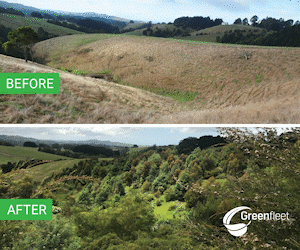Your guide to reducing costs, optimising productivity and increasing the safety of your drivers and vehicles
Putting together a strategic document for your business or a business unit you manage can often seem like a cumbersome administrative task for many managers. It is not an easy ask, to put down into one document all that goes into running your business operations smoothly on a day-to-day basis. To evaluate the past, analyse the present and forecast the future.
A management strategy document plays a crucial role in setting goals for your business, unit/team. It aligns your unit/team’s management strategy to the wider business goals, helps you nail down the key drivers impacting your unit’s performance, and helps you prioritise operations and functions that need improvement. It also allows you to clearly define the roles, responsibilities and KPIs for every resource available to you and used by your unit/team.
What is a fleet management strategy?
A fleet management strategy is a strategic document that demonstrates how a fleet aligns to an organisation’s overarching objective, strategy and plans. The strategy is used to build, run, manage and optimise a fleet that is owned or leased. It defines the organisation’s approach to the day-to-day management of its fleet.
To develop a genuinely effective vision for your fleet, the fleet management strategy must link in with your organisation’s strategic priorities. The strategy must be considered as part of your organisation’s overall approach to fleet management and should also link in with your environmental aims.
For the purpose of this article a fleet refers to an organisation’s light passenger vehicles, vans, trucks, machinery and heavy equipment.
What is involved in preparing a fleet management strategy?
There are a few key elements to consider when putting together your organisations fleet management strategy.
Consulting the business to identify objectives
A key part of the strategy is defining the purpose of the fleet. A good fleet management strategy should outline how the fleet fits in with the objectives of the business as a whole. The what, how and why. What is the business doing? How is it doing it? Why is it doing it that way?
To answer these questions, a fleet manager should work across the business to understand the needs, requirements, uses and other factors that play a role in how the business and its different departments use the fleet. If different stakeholders are not consulted when putting together the fleet strategy getting buy-in on how to procure, manage and dispose of the assets might become a cost-deficient and ineffective task. Similarly, if the strategy is developed without user input, your fleet may not meet the needs of users in terms of fleet size, vehicle type, legislative changes and training requirements.
For example, a CEO may view the fleet as an asset to be optimised. A Fleet Manager may view the fleet as a group of vehicles which need to be efficiently used, managed and maintained. An Occupational Health and Safety (OH&S) Manager may view the fleet as a potential workplace hazard and must ensure that both vehicles and drivers adhere to safety protocol and meet compliance requirements. An Operational Manager may view the fleet as a vital part of the supply chain that is critical for ferrying goods and services from point A to B.
Examine the context and mitigate risk
It’s also worth noting future factors and possible interruptions. Future factors could include the possibility of technical advances throughout the life of the strategy that may interrupt or improve established operations. Your fleet management strategy should be flexible enough to accommodate these changes and should set out the approval protocol in advance, should the need for review or change in strategic directions arise.
Other interruptions could include risk factors that may disrupt operations such as a supplier issue, product recall (think Takata airbags) or an employee injury while using a vehicle. Some organisations choose to note this as a formal risk matrix, where an issue can be identified and matched with mitigation actions or preparedness policies to demonstrate that resilience.
Structuring a fleet lifecycle plan
A fleet management strategy should also include a fleet lifecycle plan. A fleet lifecycle plan looks at the entire life of the asset – from procurement to disposal. It outlines how a vehicle will be procured, how the asset will be ‘sweated’ (ie how to get the most out of it for the purpose that it holds); how maintenance will be undertaken and how the fleet will be managed day-to-day. A lifecycle plan acts out your strategy, in the same way that a business’ structure follows strategy.
There are many ways that a life cycle plan can be set out. Some organisations use a plan, build, run, manage model which lays out the procedures for each stage, accompanied by supporting documentation within the business to match each stage, key accountability information as well as who approves what within the business. Irrespective of how you may choose to structure your fleet life cycle plan, it should, at a minimum, include procurement stages, day to day management responsibilities and maintenance protocols.
On the procurement side, a fleet lifecycle plan should look at how the vehicle is being procured (for example, owning vs leasing vehicles) as well as auxiliary procurement items such as tyres, fuel, insurance, chassis and parts as well as support services such as maintenance provision, breakdown, recovery and vehicle hire.
A servicing and maintenance plan can also be built directly into the fleet lifecycle plan. This would include details such as whether maintenance occurs at regular intervals or by employing a predictive maintenance system that detects problems on the run, reducing the spacing between set intervals.
Lastly, a fleet lifecycle plan needs to identify how long a fleet will operate for and how the fleet will be disposed of. A fleet’s operating life will be set based on the procurement option taken (such as a vehicle lease or outright purchase), how the vehicle is maintained, legalities around road worthiness, depreciation factors, and of course, how it is used.
When a fleet comes to the end of its life, its disposal will need to be planned. If a vehicle is leased it will need to be returned to the leasing company at the end of its contractual life. If the organisation owns the vehicle, options for vehicle disposal such as selling it to neighbouring organisations or at auction will have to be considered and planned for. Many organisations prefer to dispose of their used vehicles in auctions as this method provides them the opportunity to gain a fair price and save time on advertising, storing vehicles, hosting open days and managing bids.
It may also be possible to remove parts and equipment from the vehicle which can be used elsewhere (eg. winches, roof racks or internal racking).
Each business unit will have policies in relation to many – if not most – of these factors. A fleet management strategy should outline what these policies are; how to find them; and how the fleet will adhere to such policies.
As Benjamin Franklin famously said, “If you fail to plan, you are planning to fail.” Without a strategy, everyone within the organisation is playing a guessing game leading to misalignments.
The following article was originally published by Intelematics and has been republished with permission



















